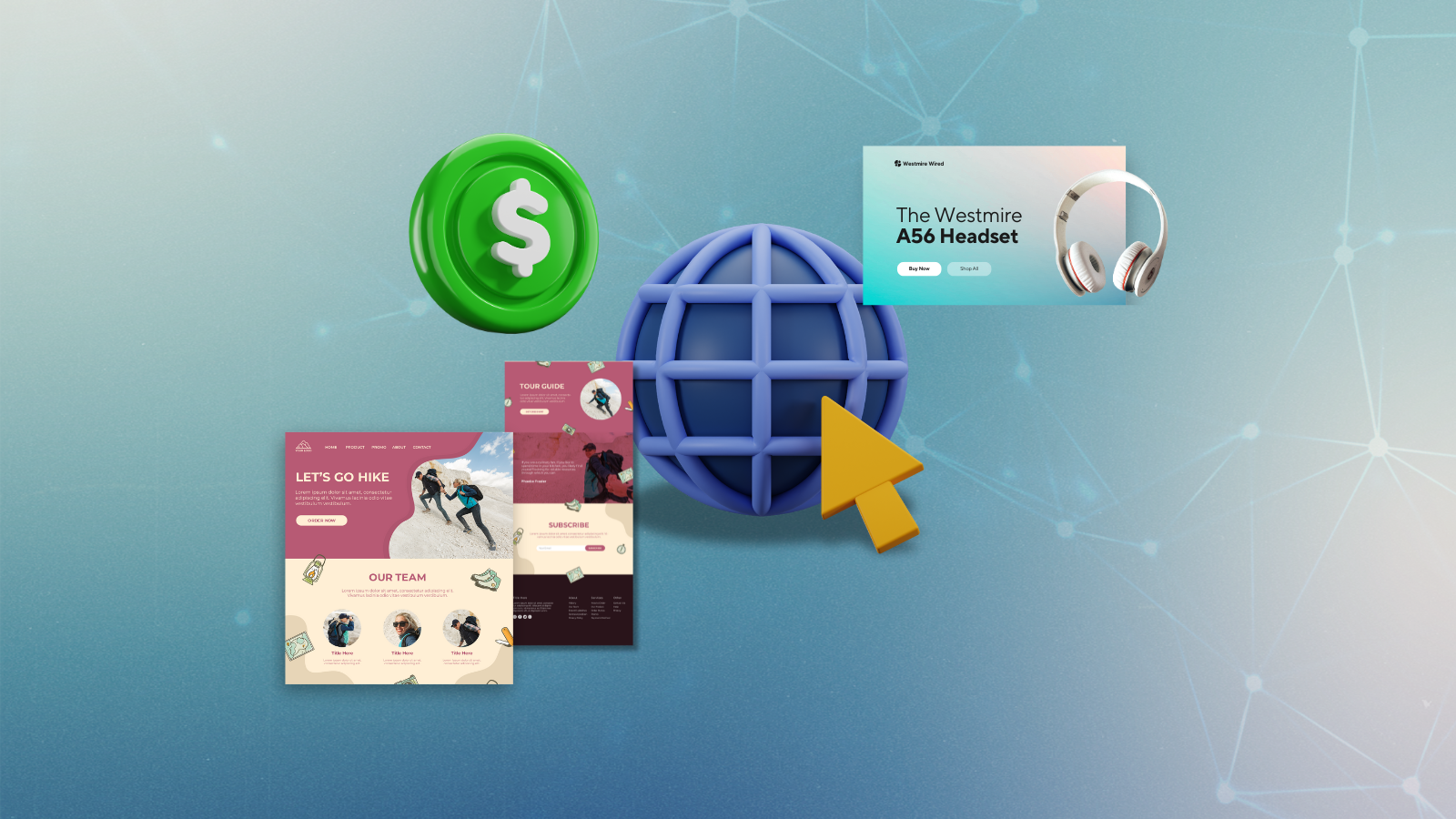Table of Contents
Introduction
Dealing with objections is a vital skill for entrepreneurs and marketers looking to convert potential customers into loyal brand advocates. Objections are often the roadblocks that stand between a lead and a closed deal.
Here are five common objections and strategies to address them effectively:
1. Addressing Objection: "I don't see how this solves my problem"
When potential customers express concerns about how your product or service can address their unique needs, it’s an opportunity to provide them with in-depth information and assurance.
Here’s how you can effectively tackle this objection:
1.1 Provide In-depth Information:
Explain how your product or service specifically addresses their problem.
- Take the time to thoroughly understand the customer’s issue. Ask probing questions to delve into the specifics of their challenges.
- Clearly and concisely describe the features, capabilities, and benefits of your product or service. How do they align with the customer’s problem?
- Use relatable examples and analogies to simplify complex concepts and make it easier for the customer to grasp the solution.
1.2 Share Success Stories:
Showcase testimonials or case studies from satisfied customers who faced similar issues and found resolutions with your offerings.
- Share real-life success stories that highlight how your product or service solved similar problems for other customers.
- Include detailed testimonials or case studies that describe the initial challenges, the implementation of your solution, and the positive outcomes achieved.
- If possible, use visual aids such as before-and-after images or charts to illustrate the transformation that occurred with the help of your product or service.
1.3 Demonstrate Value:
- Offer a free trial or demo to illustrate firsthand how your product/service can effectively resolve their problem.
- Provide a risk-free opportunity for the customer to experience your product or service. A free trial or demo allows them to see the benefits for themselves.
- During the trial or demo, guide the customer through the specific features that address their problem. Show them how to navigate the solution and demonstrate its efficacy.
- Be available to answer questions and offer support during the trial period, ensuring the customer’s concerns are addressed in real time.

2. Addressing Objection: "I've never heard of you. I don't trust you"
When potential customers express skepticism due to their lack of familiarity with your brand, it’s essential to employ strategies that build trust and credibility.
Here’s how you can effectively tackle this objection:
2.1 Build Trust:
- Share social proof, such as customer reviews and testimonials, to establish trustworthiness.
- Feature authentic customer reviews and testimonials prominently on your website and marketing materials.
- Encourage satisfied customers to share their positive experiences and highlight the benefits they’ve received from your product or service.
- Include diverse testimonials to showcase the wide range of customers who trust and endorse your brand.
2.2 Company Background:
- Provide information about your company’s history, values, and mission to demonstrate transparency and credibility.
- Offer a brief but compelling overview of your company’s journey, emphasizing key milestones and achievements.
- Clearly communicate your company’s core values, showing how they align with providing high-quality products or services and exceptional customer experiences.
- Share your mission statement, focusing on the positive impact your brand aims to make in the lives of customers and the community.
2.3 Highlight Recognition:
- Mention any awards or recognitions your company has received to bolster your reputation. Showcase any industry awards, certifications, or accolades that your company has earned. These serve as external validations of your excellence.
- Use recognizable award logos and certifications on your website and marketing materials to enhance credibility.
- Provide links to press releases or news articles featuring your brand’s achievements.
2.4 Guarantee Satisfaction:
- Offer a guarantee or money-back policy to ease their concerns.
- Assure potential customers that you stand by the quality of your product or service by providing a satisfaction guarantee or a money-back policy.
- Clearly outline the terms and conditions of the guarantee, ensuring transparency and clarity. Emphasize your commitment to customer satisfaction and your willingness to address any issues that may arise.
By addressing this objection proactively, you demonstrate your commitment to transparency and customer satisfaction. Overcoming skepticism and building trust is a crucial step in establishing a strong and lasting relationship with your customers. It also helps reassure potential customers that they can have confidence in your brand and the value it offers.
3. Addressing Objection: "I'm not sure I need this right now"
When potential customers express uncertainty about the immediate necessity of your product or service, it’s important to provide them with reasons to consider its value.
Here’s how you can effectively tackle this objection:
3.1 Showcase Benefits:
- Highlight the tangible benefits and advantages of your product or service and how it can enhance their current situation. Provide a clear and concise list of the specific benefits and solutions your product or service offers.
- Emphasize how it can address their pain points or fulfill their needs. Share success stories or case studies that illustrate how others have benefited from your offering in similar situations.
- Use relatable examples and real-life scenarios to help them envision how your product or service can make their lives easier or better.
3.2 Present Industry Insights:
- Share industry insights or data supporting the need for your product or service. Offer statistics, studies, or industry-specific data that demonstrate the growing demand for solutions like yours.
- Share information about emerging trends, challenges, or opportunities in the industry that your product or service addresses.
- Position your offering as a proactive solution to potential issues, making it clear that it’s better to address these needs sooner rather than later.
3.3 Limited-Time Promotion:
- Create a sense of urgency by offering a time-limited promotion or an attractive incentive to encourage them to try your product/service.
- Introduce a special limited-time offer, discount, or promotion that creates a compelling reason for them to take action now.
- Emphasize the scarcity of the promotion, highlighting that it won’t be available indefinitely. Showcase the added value they’ll receive by acting promptly, such as cost savings, additional features, or exclusive bonuses.
By addressing this objection effectively, you help potential customers see the immediate value and relevance of your product or service.
4. Addressing Objection: "Why is it so expensive?"
When potential customers question the cost of your product or service, it’s important to provide them with a clear rationale for the pricing while also offering alternatives for affordability.
Here’s how you can effectively tackle this objection:
4.1 Emphasize Value:
- Explain the value and benefits of your product or service, clarifying how they justify the price.
- Break down the features, advantages, and unique selling points of your offering to demonstrate its value.
- Showcase how your product or service can address the customer’s pain points or fulfill their needs more effectively than lower-priced alternatives.
- Share success stories and case studies that illustrate the substantial benefits and positive outcomes achieved by others who invested in your offering.
4.2 Competitive Analysis:
- Share competitive analysis or industry data showing your pricing is comparable or even more cost-effective than competitors.
- Present a side-by-side comparison with competitors, highlighting the advantages of your product or service.
- Share data or statistics that indicate how your pricing provides a superior value proposition when considering quality and results.
- Utilize testimonials or customer reviews that emphasize the long-term cost-effectiveness of your offering.
4.3 Flexible Payment Options:
- Offer payment plans or financing options to make your product or service more affordable and accessible.
- Provide payment flexibility, such as installment plans, subscription models, or financing arrangements that spread the cost over time.
- Highlight the affordability and convenience of these payment options, making it easier for customers to budget for your product or service.
- Illustrate how the long-term value of your offering can offset the initial investment, making it a wise financial decision.
By addressing this objection comprehensively, you not only justify the price of your product or service but also offer flexibility to cater to a broader range of potential customers. This approach helps potential buyers see the true value of your offering and enables them to make an informed decision that aligns with their budget and needs.
5. Addressing Objection: "I saw a better product somewhere else"
When potential customers express that they’ve found a seemingly better product or service elsewhere, it’s crucial to demonstrate the unique value your offering brings and provide compelling reasons to choose your brand.
Here’s how you can effectively tackle this objection:
5.1 Highlight Uniqueness:
- Emphasize the unique features and benefits of your product or service that set it apart from competitors.
- Identify the specific qualities and advantages that make your offering stand out in the market.
- Highlight any innovative features, superior quality, or exceptional customer service that differentiates your brand. Showcase how these unique aspects provide a more comprehensive or tailored solution to the customer’s needs.
5.2 Side-by-Side Comparison:
- Offer a comparison chart or side-by-side analysis of your product or service in comparison to the competition.
- Create a visual aid, such as a comparison chart, that clearly outlines the strengths and advantages of your product or service in contrast to alternatives.
- Address any shortcomings or limitations of the competitor’s offering while showcasing your strengths. Use data and evidence to support your claims and present an objective analysis.
5.3 Price Match or Promotion:
- Extend a price-matching option or a limited-time promotion to entice them to choose your product/service. If the customer’s concern is primarily price-based, consider offering a price-matching option to meet or beat the competitor’s price.
- Create a limited-time promotion or special offer that provides added value, discounts, or bonuses to sweeten the deal. Highlight the immediate cost savings or extra benefits they’ll receive by choosing your product or service during the promotional period.
By addressing this objection effectively, you not only reaffirm the unique advantages of your offering but also provide the customer with compelling reasons to select your brand. Offering competitive analysis and price-matching options demonstrates your commitment to delivering the best value and experience, increasing the likelihood of winning their business.




